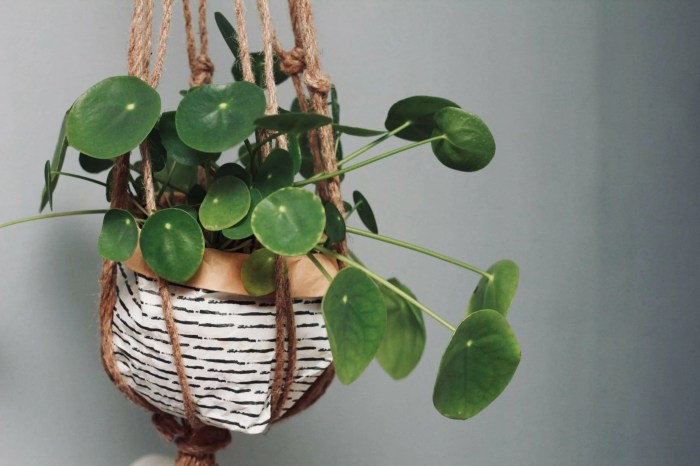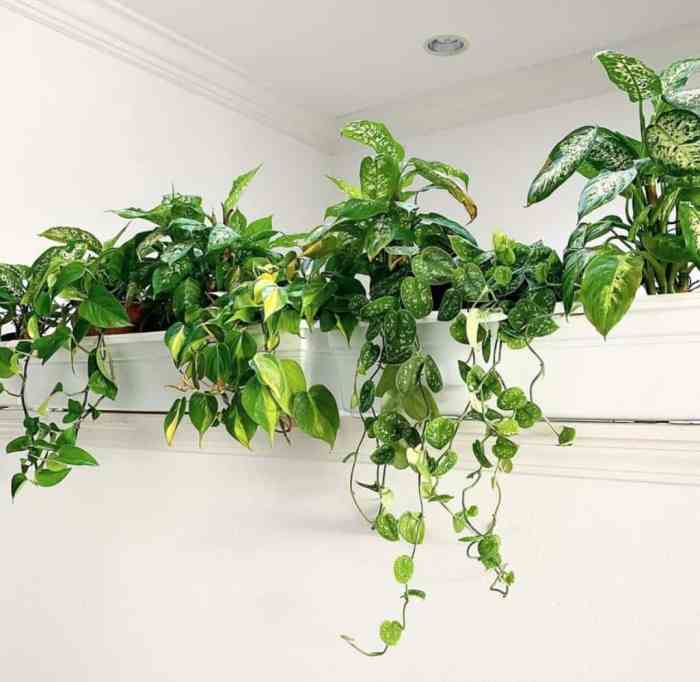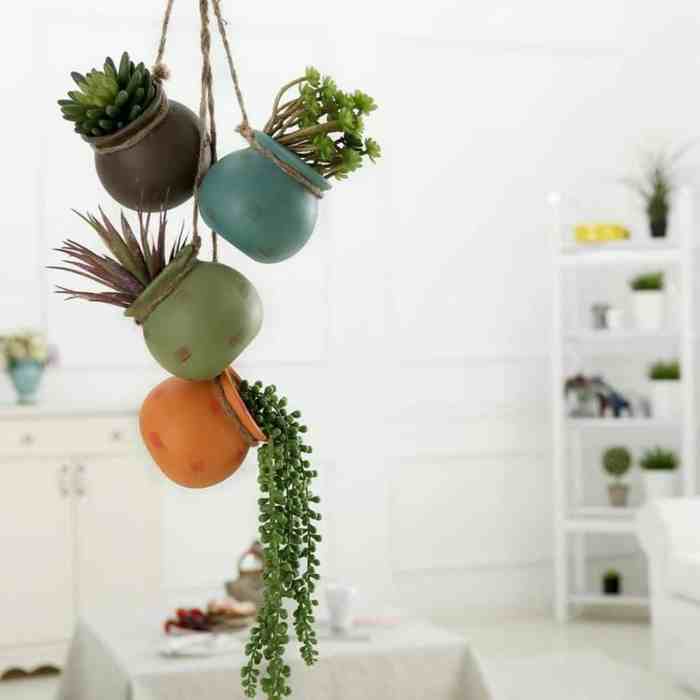Draping plants indoor has become a popular way to add a touch of nature and style to any home. With their trailing stems, cascading foliage, or climbing habits, these plants bring a sense of lushness and vertical interest to any space.
In this article, we will explore the different types of drapable plants, discuss their benefits, provide tips on how to care for them, and share creative ways to use them in your home decor.
Types of Drapable Plants

Indoor draping plants add a touch of elegance and greenery to any space. These plants feature trailing stems, cascading foliage, or climbing habits, creating a visually appealing effect as they drape over shelves, furniture, or walls.
Here is a comprehensive list of indoor plants suitable for draping:
Trailing Stems
- Pothos (Epipremnum aureum): Known for its heart-shaped leaves and long, trailing stems that can reach up to 10 feet.
- Spider Plant (Chlorophytum comosum): Produces long, arching stems with spider-like plantlets at the tips.
- String of Pearls (Senecio rowleyanus): Features delicate, bead-like leaves that cascade gracefully over the edges of containers.
Cascading Foliage
- Boston Fern (Nephrolepis exaltata): Displays arching fronds with delicate leaflets that create a cascading effect.
- Asparagus Fern (Asparagus setaceus): Known for its feathery foliage that resembles asparagus spears and adds a unique texture to indoor spaces.
- Peperomia (Peperomia spp.): Includes various species with trailing stems and cascading leaves in different shapes and colors.
Climbing Habits
- English Ivy (Hedera helix): A classic climbing plant with trailing stems and glossy, green leaves that can cling to walls or trellises.
- Philodendron (Philodendron spp.): Some species, such as Philodendron scandens, have climbing stems that can reach up to 20 feet.
- Monstera (Monstera deliciosa): Known for its large, perforated leaves and aerial roots that allow it to climb vertically.
Benefits of Draped Plants
Draped plants bring a wealth of benefits to indoor spaces, elevating their aesthetic appeal and fostering a healthier environment.
Aesthetically, draped plants create a sense of lushness and vertical interest. Their cascading foliage adds depth and texture, softening hard lines and creating a more inviting atmosphere. By utilizing vertical space, they maximize greenery without taking up valuable floor space.
Air Purification
- Draped plants are natural air purifiers, effectively removing toxins such as formaldehyde, benzene, and trichloroethylene from the air.
- Their leaves absorb these harmful substances and release oxygen, creating a healthier indoor environment.
Stress Reduction
Studies have shown that interacting with plants can reduce stress levels and promote relaxation.
Draped plants, with their calming presence and gentle movement, create a soothing atmosphere that can help alleviate stress and improve overall well-being.
Improved Indoor Humidity
Draped plants release moisture into the air through transpiration, increasing indoor humidity.
This can help alleviate dry air, which can cause respiratory issues and discomfort, particularly during the winter months.
Considerations for Draping Plants: Draping Plants Indoor

When choosing plants for draping, it’s essential to consider factors like light requirements, growth habits, and support structures. Different plants have varying light needs, so select species suitable for the available lighting conditions in your space. Consider the plant’s growth habit; trailing or vining plants are ideal for draping, while upright or bushy plants may not be as effective.
Additionally, ensure you have appropriate support structures, such as hanging baskets, trellises, or plant stands, to support the plant’s growth and prevent damage.
Support Structures for Draped Plants, Draping plants indoor
Selecting the right support structure for draped plants is crucial for their health and appearance. Hanging baskets are a popular choice for trailing plants, allowing them to cascade gracefully. Trellises provide support for climbing plants, enabling them to reach upwards and create a vertical display.
Plant stands can elevate plants to desired heights and offer a versatile option for both indoor and outdoor use. Consider the plant’s size, weight, and growth habit when choosing a support structure to ensure it provides adequate support and stability.
Draping plants indoor is a great way to add life and color to your home. Whether you choose to hang them from the ceiling or place them on a shelf, there are many different ways to incorporate draping plants into your decor.
For a modern and sophisticated look, consider using a black hanging planter indoor . These planters are available in a variety of shapes and sizes, so you can find one that will perfectly complement your space. Draping plants indoor can help to purify the air and create a more relaxing atmosphere, so they are a great addition to any home.
Care and Maintenance
Draped plants require specific care to thrive indoors. Watering, fertilizing, and pruning are essential for maintaining their health and appearance.
Water draped plants regularly, allowing the soil to dry out slightly between waterings. Overwatering can lead to root rot, while underwatering can cause wilting and leaf drop. Fertilize draped plants monthly during the growing season with a balanced liquid fertilizer.
Pruning
Regular pruning is essential to manage the growth of draped plants and prevent them from becoming leggy or overgrown. Prune stems back to a healthy leaf node to encourage bushier growth. Remove any dead or damaged leaves or stems to improve the plant’s overall health.
Pest and Disease Management
Draped plants can be susceptible to pests and diseases, such as aphids, mealybugs, and spider mites. Regularly inspect plants for signs of infestation and treat promptly with an appropriate insecticide or fungicide. Good air circulation and proper watering practices can help prevent pest and disease problems.
Creative Uses of Draped Plants

Draped plants add a touch of greenery and elegance to any indoor space. They can be used to create unique and eye-catching displays, while also providing numerous benefits.
Draping plants indoors adds a touch of greenery and freshness to any space. For larger areas, large indoor hanging planters offer a stylish and practical solution. These planters provide ample space for trailing plants to cascade gracefully, creating a dramatic visual effect.
By suspending these planters from the ceiling or walls, you can optimize vertical space and showcase your plant collection in a unique and eye-catching way.
One creative way to use draped plants is as room dividers. A trailing plant, such as ivy or pothos, can be hung from the ceiling or a shelf to create a natural partition between two spaces. This is a great way to add privacy or to define different areas within a room.
Draped plants can also be used as privacy screens. A dense plant, such as a fern or a spider plant, can be placed in front of a window or doorway to block out unwanted views. This is a great way to create a sense of seclusion or to add privacy to a particular area.
Finally, draped plants can be used to create vertical gardens. By mounting plants on a wall or trellis, you can create a lush and vibrant display that adds a touch of nature to any room. Vertical gardens are a great way to save space and to add a touch of greenery to small spaces.
Tips for Using Draped Plants Creatively
* Choose plants that are trailing or vining, as these will naturally drape over surfaces.
- Consider the size and shape of the space when choosing plants.
- Use a variety of plants to create a lush and interesting display.
- Be creative and experiment with different ways to hang or mount your plants.
- Water and fertilize your plants regularly to keep them healthy and looking their best.
Final Wrap-Up
Whether you’re looking to create a lush indoor jungle, add a touch of privacy to a room, or simply add a touch of greenery to your home, draping plants are a versatile and beautiful way to do so. With proper care and maintenance, these plants will thrive and bring years of enjoyment.
Question & Answer Hub
What are the benefits of draping plants indoors?
Draping plants indoors can provide a number of benefits, including improved air quality, reduced stress levels, and increased humidity.
What are some creative ways to use draping plants indoors?
Draping plants can be used in a variety of creative ways indoors, such as room dividers, privacy screens, and vertical gardens.
How do I care for draping plants indoors?
Draping plants indoors require specific care, including proper watering, fertilizing, and pruning. It’s important to research the specific needs of your plant to ensure it thrives.